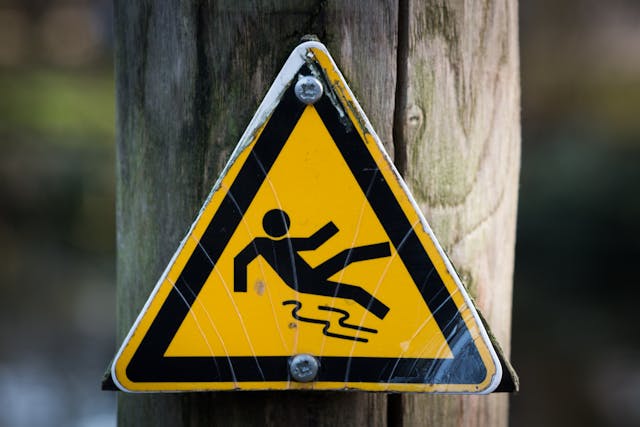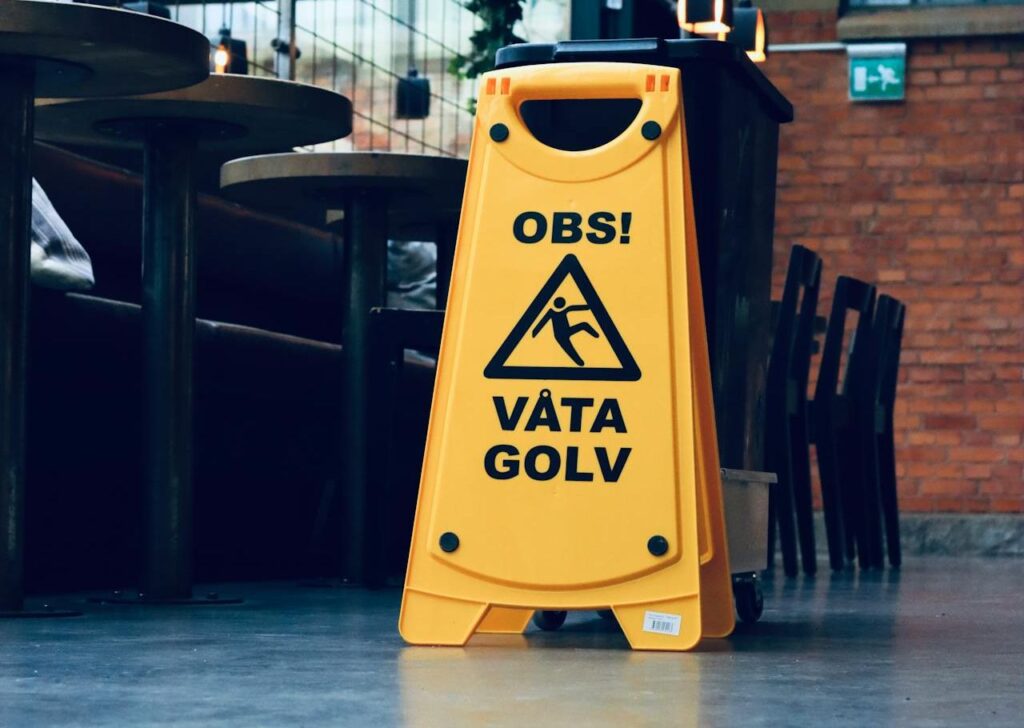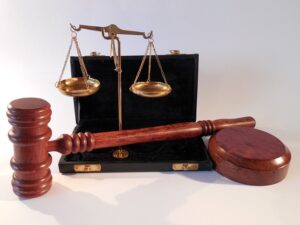
Unveiling the Average Payout for Slip and Fall Injury Claims
In the universe of personal injury litigation, a unique subset resonates with an air of unpredictability – slip and fall injury claims. These incidents echo the narrative where an individual has been rendered injured due to slipping, tripping or tumbling because of precarious conditions. The hazards could be as commonplace as wet floors or erratically positioned items, or more structural like faulty stairways and uneven terrain.
These perilous situations are not confined to any specific environment but lurk in diverse locales such as workplaces, public areas, even private estates. Injury claims in these instances often necessitate evidence of negligence or culpability that shifts the responsibility onto the shoulders of those owning or occupying these premises.
The monetary redress for such injuries – colloquially known as average payout for slip and fall injury – oscillates dramatically. It’s largely tethered by factors including particular circumstances surrounding the incident, gravity of injuries inflicted, and any identified negligence on part of involved entities. Injuries could span from inconsequential sprains to fractured bones; they might escalate to grave spinal cord damage or traumatic head injuries – all elements that significantly affect settlement amounts.
Navigating through this labyrinthine realm calls for legal acumen; it is imperative one seeks counsel from seasoned professionals adept at dissecting complex subtleties inherent in these cases ensuring swift and commensurate compensation.
- Slip and fall injury claims are a unique subset of personal injury litigation. They involve incidents where an individual is injured due to slipping, tripping or falling because of hazardous conditions.
- These hazards can range from common issues like wet floors or poorly positioned items to more structural problems such as faulty stairways and uneven terrain.
- The risks associated with slip and fall injuries are not limited to any specific environment. They can occur in diverse locations such as workplaces, public areas, and even private properties.
- In order for a claimant to be successful in their case, they often need evidence of negligence or culpability that shifts the responsibility onto those who own or occupy the premises where the incident occurred.
- The compensation awarded for these types of injuries – also known as average payout for slip and fall injury – varies greatly depending on several factors. These include the circumstances surrounding the incident, severity of injuries sustained, and any identified negligence on part of involved entities.
- Injuries resulting from slip and falls vary widely; from minor sprains to fractured bones. Severe cases may lead to grave spinal cord damage or traumatic head injuries – all elements that significantly affect settlement amounts.
- Navigating through this complex field requires legal expertise; it is crucial one seeks advice from seasoned professionals adept at dissecting complex subtleties inherent in these cases ensuring swift and commensurate compensation.
In conclusion:
Slip-and-fall accidents pose significant risks leading to physical harm which could have lasting effects on an individual’s life quality. It’s important victims understand their rights when pursuing a claim against negligent parties responsible for maintaining safe environments. With professional guidance navigating through intricate intricacies within this realm becomes less daunting ensuring fair recompense is secured promptly effectively mitigating financial strain resultant from incurred medical expenses loss income among other related costs
The Legal Process Behind Slip and Fall Cases

Delving into the labyrinth of slip and fall case judgments necessitates a meticulous dissection of legal protocols that preside over them. A plethora of aspects must be scrutinized, such as establishing culpability, gauging the gravity of injuries, appraising medical costs and wage losses, plus estimating emotional turmoil. Each fragment plays a pivotal role in shaping the verdict’s trajectory and prospects for settlement.
Often people are left pondering – “What is the zenith settlement for a slip and fall?” The response to this query isn’t linear. The magnitude of settlement oscillates depending on myriad factors like site of mishap, involvement level of negligent entity, injury severity along with computed economic and non-economic afflictions. As such, these amounts vary widely across different cases; however pinpoint identification can bolster chances for securing an affluent settlement.
Assessing the Severity of Injuries in Slip and Fall Cases
In the curious realm of slip and fall cases, one can’t help but notice that the harshness of injuries is a crucial pivot around which swings the pendulum of compensation due to the regrettable victim. It’s an intriguing observation that not every stumble or tumble manifests in grievous harm; indeed, they vacillate between mild scrapes and contusions to intricate fractures and jarring brain traumas. Inevitably, both gavels of justice and calculators of insurance companies weigh this spectrum of physical distress when determining remuneration extent.
A popular topic sparking lively curiosity revolves around compensation sums – questions such as “What’s typically pocketed after a slip-and-fall incident in Colorado?” proliferate amidst conversations. Though it remains elusive to pin down a definitive figure – given how settlements are buffeted by an array of variables – it stands true that injuries with higher severity tend to command larger recompense amounts.
Such afflictions often compel prolonged care or substantial medical intervention. The resultant towering pile-up of healthcare bills coupled with potentially extended bouts incapacitated from work create financial strains that are meticulously factored into when calculating compensation.
How Medical Expenses Influence Compensation
As we delve into the complexities of assessing claims arising from slip and fall incidents, it becomes evident that medical outlay forms a pivotal element in this appraisal. The magnitude and financial load of these healthcare costs typically constitute an integral portion of the ensuing recompense calculation; both retrospective and prospective medical bills are taken under consideration.
Retrospective or past medical charges point to those which have been accumulated post-injury – ambulance tariffs, hospital emergency room expenditure, as well as initial treatment costs. Conversely, future medicinal expenses are projected based on anticipated recovery timeframes or enduring care necessities like physiotherapy sessions or remedial surgeries.
To elucidate how health-related expenditures can sway the compensation amount, let’s ponder over the mean settlement for soft tissue damages in Colorado. Soft tissue impairments including contusions, strains, whiplash injuries among other similar non-osseous harms usually do not fetch equivalent compensatory amounts when juxtaposed with graver, perpetual ailments such as spinal afflictions or traumatic brain injuries. Yet where extensive therapeutic intervention is necessitated or when significant work abstention ensues due to injury aftermaths – then even for soft tissue damage cases- compensations may see a dramatic upsurge.
Therefore across all instances one comes to realize that compensation sums hinge heavily upon specific health-related expenditure pertinent to each injury case.
The Role of Liability in Determining Compensation
The task of pinpointing culpability in slip and fall injury cases is a labyrinthine endeavor, one that carries profound implications for the prospective compensation results. This complex procedure calls for the substantiation of negligence or fault on behalf of the purported party involved in orchestrating the mishap. Queries frequently revolve around “What are average personal injury settlements?” The response to this question defies exact quantification due to each case’s distinct nature, yet liability wields significant sway over this assessment.
Once ascertained, a party’s proportion of responsibility exerts substantial influence on what becomes their settlement sum. For instance, if an estate owner bears 70% of the blame for the incurred injuries, they might find themselves answerable for 70% of all validated damages. On flip side however, should it be determined that injured individual played some part in causing their own misfortune; it could drastically dent their potential recompense. This element accentuates just how pivotal it is to secure proficient legal counsel capable enough to passionately argue matters concerning liability on behalf their clientele during these disputes so as ensure fairness prevails when reaching a settlement.
The Impact of Lost Wages on Settlement Amounts
In the intricate labyrinth of personal injury litigations, particularly those born from slip and fall happenings, the component of lost wages casts a formidable shadow on the settlement sum. This slice of reparations endeavours to catapult victims back into their pre-accident financial steadiness – an existence untouched by calamity.
This claim facet encapsulates more than just immediate wage loss at the moment of trauma. It spreads its wings further, enshrouding potential earnings that might evaporate in light of persistent physical impairment following the incident.
The calculation of this monetary compensation is not devoid of complexity but necessitates an acute eye for detail. In fashioning an accurate estimation for lost wages, a profusion of variables are brought under scrutiny. These could span from age to occupation, proficiency level to experience and even prospective ascents up professional ladders or overtime opportunities.
One should perceive it as more than merely indemnification for vanished earnings; instead envision it as a financial lifebuoy aimed at countering detrimental fiscal consequences triggered by unanticipated injuries.
Pain and Suffering: A Key Factor in Settlements
In the labyrinthine world of personal injury claims, ‘pain and suffering’ is a term that embodies an array of both physical distress and emotional turmoil experienced as a result of an accident or injury. This non-financial detriment becomes a part of the calculation when seeking compensation for those who have been injured. Within these legal precincts, ‘pain and suffering’ includes not just immediate discomfort or agony following incidents such as slip-and-fall accidents, but also potential future afflictions like anxiety or depression.
Medical reports along with testimonies from experts are often harnessed to lend credibility to these claims, sketching out in stark detail the victim’s ordeal.
The unique facts and circumstances surrounding each case directly influence how seriously the court considers ‘pain and suffering’. Hence it falls upon attorneys to meticulously weave together their client’s narrative, thereby aiding in determining an apt compensation amount. Evidence pointing towards long-term consequences such as enduring pain or irreversible trauma can considerably amplify the worthiness of the claim. Consequently, although intangible in nature , ‘pain and suffering’ assumes great importance when shaping settlements in slip-and-fall cases.
FAQ
Indeed, these entail legal entreaties put forth by an individual who has sustained injuries from slipping, tripping or a fall within another’s property boundaries. They’re pleas for recompense due to damages inflicted during the incident.
Absolutely. The formalities woven into such cases typically encompass lodging a lawsuit, embarking on discovery phase exploration, negotiation towards settlement terms, with potential progression to trial stage if required. It’s initiated when the injured party lodges grievances against property owners obligated legally to maintain safe premises.
Medical evaluations form the basis of assessing how severe any injuries suffered might be – this may involve physical check-ups, diagnostic tests and authoritative medical opinions. The degree of injury severity coupled with necessary medical treatment scope can significantly sway compensation figures awarded subsequently.
Medical expenditure takes center-stage when defining compensation sums involved in such cases – higher bills tend to correlate with increased compensations. This encapsulates hospitalization costs, surgical charges, medication prices as well as physiotherapy fees alongside predicted future healthcare costs linked directly to said injury.
Liability – establishing fault – profoundly impacts ensuing compensation figures seen in slip and fall occurrences. If complete liability lands upon the property owner’s shoulders they could face full damage coverage requirements; however should blame partly lie with those hurt this could present reduced recompense awards for them.
Lost wages factor considerably into settlement agreements met within slip-and-fall scenarios; should inflicted injuries prevent work attendance or limit earning capacity victims could merit rightful wage loss compensations, covering both previous and future earnings losses.
Pain and suffering play a pivotal role in such case settlements; this refers to the physical discomfort coupled with emotional turmoil victims experience post-accident. While quantifying these aspects can be more challenging than calculating medical bills or wage losses, they contribute significantly towards the total compensation sum received.

